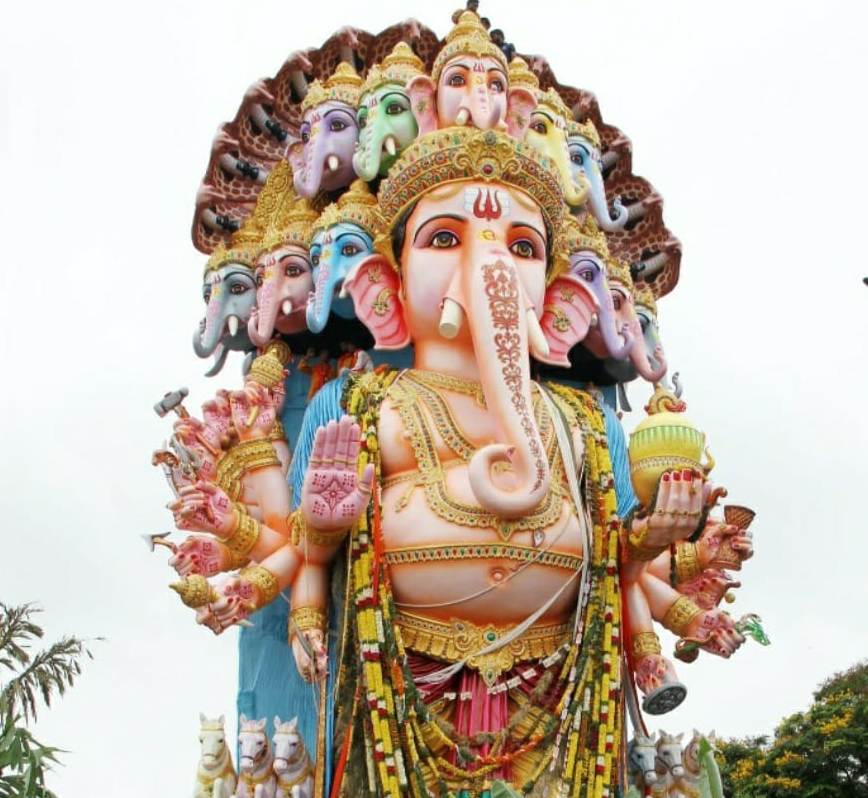Here, I am not talking of a ‘Made In Japan’ Ganesha. I am speaking of our Lord Ganesha in Japan, who the Japanese worship. Yes, our own Japanese Ganpati.
You are surprised. How can a Hindu God be worshipped in Japan?
The worship of Hindu Gods and Goddesses came to Japan from the middle of the first Millennium. One route they followed was from China and Korea. The other important course they followed was through the Hindu Kingdom of Champa, which is present-day Vietnam. In China, Korea, and Vietnam, there is a presence of Hinduism. An important example of this is the largest Hindu Temple, Angkor Wat of Cambodia.
Now,- If there are Hindu Gods in Japan, are they worshipped in the same way? Especially, Lord Ganesha in Japan or should I say our Japanese Ganpati
The primary religion in Japan is Buddhism. In Ancient India, there were no divisions between Hinduism and Buddhism. The earliest known images of Lakshmi and Saraswati come from Buddhist and Jain stupas.
In this article, I will focus on Lord Ganesha in Japan. Or The Japanese Ganpati
He is called Kangi-ten in Japan. The name means the ‘Giver of joy and prosperity’ and forms an integral part of Japanese Buddhism. The other titles are Ganabachi and Binayakten.
However, a single Lord represents Lord Ganesha in India, but it is a dual body idol in Japan, (The Japanese Ganpati) and he is called Soshin Kangi-ten. The beautiful double representation has an elephant-headed male and a female pair. They stand to embrace each other. The presence of a female is symbolic of ‘Shakti.’
So, how do we know which is male and which is female?
The female wears a crown and a red surplice, while the male wears a black cloth. The male will have a long tusk and trunk and the female a short one. The male is brown, and the female is fair. The female rests her feet on his while he rests his head on her shoulder. (Here, I would like to add- doesn’t it sound like the familiar husband and wife relationship. The female’s feet rest on the male signifying that the husband is ready to carry the wife’s weight and take care of her and the family and household duties. The resting of the male head on the female shoulder means that when the man is tired after the day’s work, the wife comforts him with her love.)
The inception of the dual Kangi-ten is unknown and perhaps came from Tibet, where sexual imagery is typical. There are many legends about the origin of Soshin- Kangi-ten but nothing specific.
Kangi-ten is considered to be endowed with extraordinary powers and is regarded as the protector of temples and worshipped by gamblers, actors, and geishas. People who are creative and in the pleasure business.
Just like Hinduism, Mantras are chanted from ritual texts to please Kangi-ten ( Lord Ganesha In Japan or the Japanese Ganpati) and to drive away obstacles. The meaning of Lord Ganesha is the same in India. He is called the remover of obstacles.
Osaka has the most important temple of Soshin- Kangi-ten. (The Japanese Ganpati)
Here, these embracing deities’ statues are usually not shown to the public because of the sexual implication, as the temple abides by Confucian ethics.
‘Secret Statues’ is the name given to them, kept in a separate shrine behind closed doors, where no one can see them. A phallic cover covers the idol represented in a pair. And this outside covering is called Linga-Kosa, symbolizing man and woman’s uniting.
Devotees pray to the cover (Linga-Kosa). They remove the cover only on special occasions. If you thought India was the only phallus worshipping nation in the world, then you should check out the Kanamara Matsuri festival of Japan.
The Japanese schools of Buddhism, influenced by tantric practices, adopted Brahmanic and Hindu devas or Gods. Many of the Kangi-ten temples hide the central statue because Kangi-ten is so powerful that holding it can be dangerous.
The legend says that Kangi-ten’s mother, Uma, gave birth to 1500 evil children, and the first one was Kangi-ten.- (This about the story of the birth of Lord Ganesha in Japan.) And then she gave birth to 1500 good children. Later, after his marriage, Kangi-ten from the evil side changed to the good side.
So, first being on the evil side, he is considered the creator of obstacles, but he is then easily pleased to remove them. Radishes appease him. In many of the Kangi-ten temples, you will notice the carving of radishes on pillars and doors. And like our India Ganesha, he is also fond of sweets. He likes sweet rice buns.
The Japanese Pantheon of Gods has many Hindu Gods that I would be writing about in the subsequent articles.
Conclusion-
In Hinduism, Lord Ganesha is the remover of obstacles. The patron of bankers, intellectuals, and people in creative work. Lord Ganesha in Japan or as I love to call him the Japanese Ganpati is the Lord of money, mind, and creativity.
Only the name has changed from Vinayaka of India to Binayaka of Japan. The Japanese Ganpati


0 Replies to “Why is Ganesha worship a secret in Japan? Why is the statue hidden?”